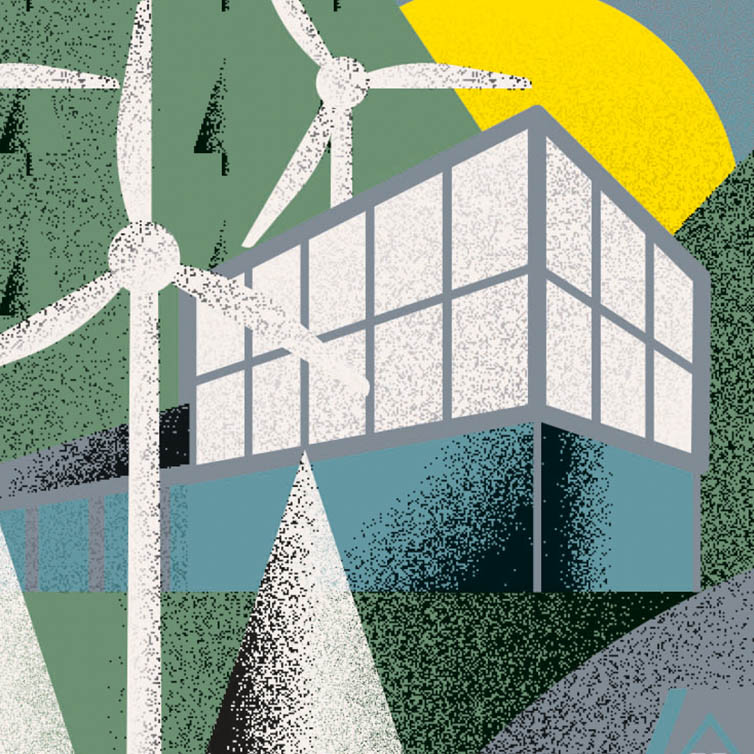Never in the history of global economics have interest rates been so low in so many countries. (At least not since the Black Death in the 14th century, when Europe lost up to half its population and interest rates were zero.) Our graph charts Bank of England official lending rates since its foundation in 1694. In the 269 years prior to 1963, interest rates averaged 4.4%, usually fluctuating between 2% and 6%. After the great inflation of the 1970s and 80s, rates seemed to be heading back to this very long-term trend.
But the global financial crisis (GFC) of 10 years ago seems to have changed all that, and not just in the UK. Government bond yields have been very low in many countries and have even been negative for short periods in Japan, Germany and Switzerland.
The low interest rates have been blamed on the actions of central banks in the US, UK, Europe and Japan, with their policies of quantitative easing (QE) and the purchase of bonds and other fixed income assets with ‘printed’ money in the wake of the GFC. But interest rates were already falling as investors responded to a ‘perfect storm’ of falling inflation and increased demand for fixed income in many developed countries.
There is widespread expectation that, as central banks cease QE and the US Federal Reserve threatens base-rate rises, interest rates and yields will start to move out again. Will the implications for real estate be as significant as many people think?
In real estate, as other asset classes, capital values have risen as yields have fallen. The expectation is that rising interest rates will push yields up and capital values down. The change in bond rates since the GFC and its subsequent impact on cap rates is sufficient alone to account for a 64% appreciation in capital values.
Fears now abound that cap rates will rise and depress commercial property values, and borrowing rates will rise to make some mortgage borrowing and real-estate loans unaffordable, prompting foreclosures and repossessions.
We think these fears may be overdone. There are three main reasons why capital value falls may not be inevitable.
First, in many markets, rental growth may be expected to continue in the medium term – albeit at a slower rate than in the post-GFC recovery phase. The availability of credit has been restricted in recent years by international regulation, such as the Basel Accords. This has meant that levels of development have been relatively low and there are few cities where an oversupply of stock will actively reduce rents. Rents will either stagnate or continue on an upward trend in the world’s most buoyant economies. It is in these countries that rate rises are most likely, so rising cap rates will often be counterbalanced by rising income for investors, keeping capital values stable.
Second, lender margins have been very high as banks have repaired their balance sheets after the turmoil of the GFC. Domestic mortgage rates have been low, but not as low as the post-GFC reduction in bank base rates. If central bank rate rises coincide with a reduction in lender margins, as lenders compete for business, the impact on borrowers will be limited and the risk of widespread defaults and foreclosures recedes. Over the longer term, low inflation rates and rising interest rates will reduce opportunities for deleveraging in the real-estate sector, but post-GFC asset price inflation will have reduced loan-to-value ratios for many existing owners.
The third factor to consider is the longer-term future for investment yields. A growing number of new, young, middle-class savers in recently emerged economies will increase demand for real-estate investments in safe and established jurisdictions. It seems likely then that a weight of money will continue to press on a limited supply of investable assets, keeping yields relatively low.
What will baby boomers do?
At the same time, ageing populations in the developed world are putting pressure on investing institutions to seek income-producing assets to pay their pensions. Some people think this age group will withdraw capital to fund retirement, thereby reducing demand for real estate. We think the opposite is true and a large number of retirees will be converting their savings to fixed income, thereby keeping interest rates low. Both individuals and funds will join the hunt for yields to meet the ‘baby boomer’ generation’s lifestyle aspirations. This has already fuelled demand for higher-yielding, hitherto ‘alternative’ assets such as residential, hotels and logistics. Secondary properties have become the new prime and value-add the new core. While such investing behaviour is often seen as irrational and associated with the top of the property cycle, it may be more sustainable than it first appears.
What all the factors add up to is a much greater focus on real-world income streams. It is difficult to foresee future asset price inflation without rental growth. This means investors will have to focus more on the fundamentals of occupier demand and its drivers than on how cap rates might move. There is increasing reason to see some secondary, non-core real estate with growing occupier demand as lower risk than conventional Grade-A buildings with a dwindling occupier base. A reappraisal is due of what will constitute a safe, stable, low-risk core investment in future.
Heidi Learner, Chief Economist of Savills Studley, on future rates
Does the end of quantitative easing mean significantly higher cap rates and investment yields are set to arrive? If the US is any example, the answer is: not soon. The US is one of only a few central banks globally that has begun the process of policy normalisation (via higher base rates and a gradual decline in the Federal Reserve’s assets via a reduction in reinvestment) and yet, when writing this in late 2017, longer-term interest rates have barely budged.
Despite two interest-rate hikes since the US presidential election in 2016 and a possible third hike in December 2017, US 10-year yields have fluctuated in a narrow 50bps range, and show little momentum for a Fed that has telegraphed an additional three rate hikes in 2018. At play is a conundrum that plagues central banks globally: where is the inflation? With little evidence of wage growth feeding through to an overall increase in prices, it is hard to foresee an increase in nominal rates and, notably, dramatic increases in rents that would push cap rates higher.





